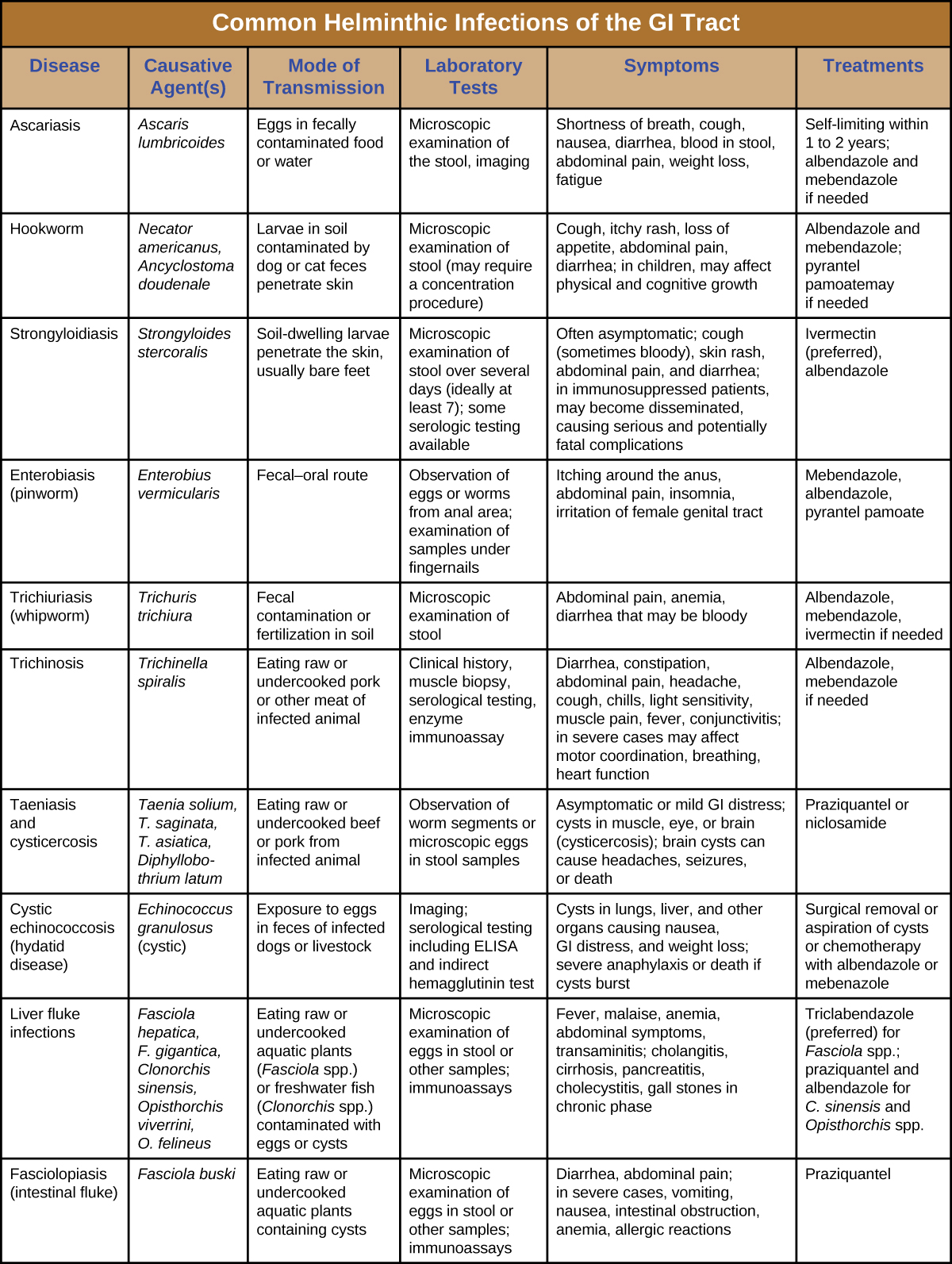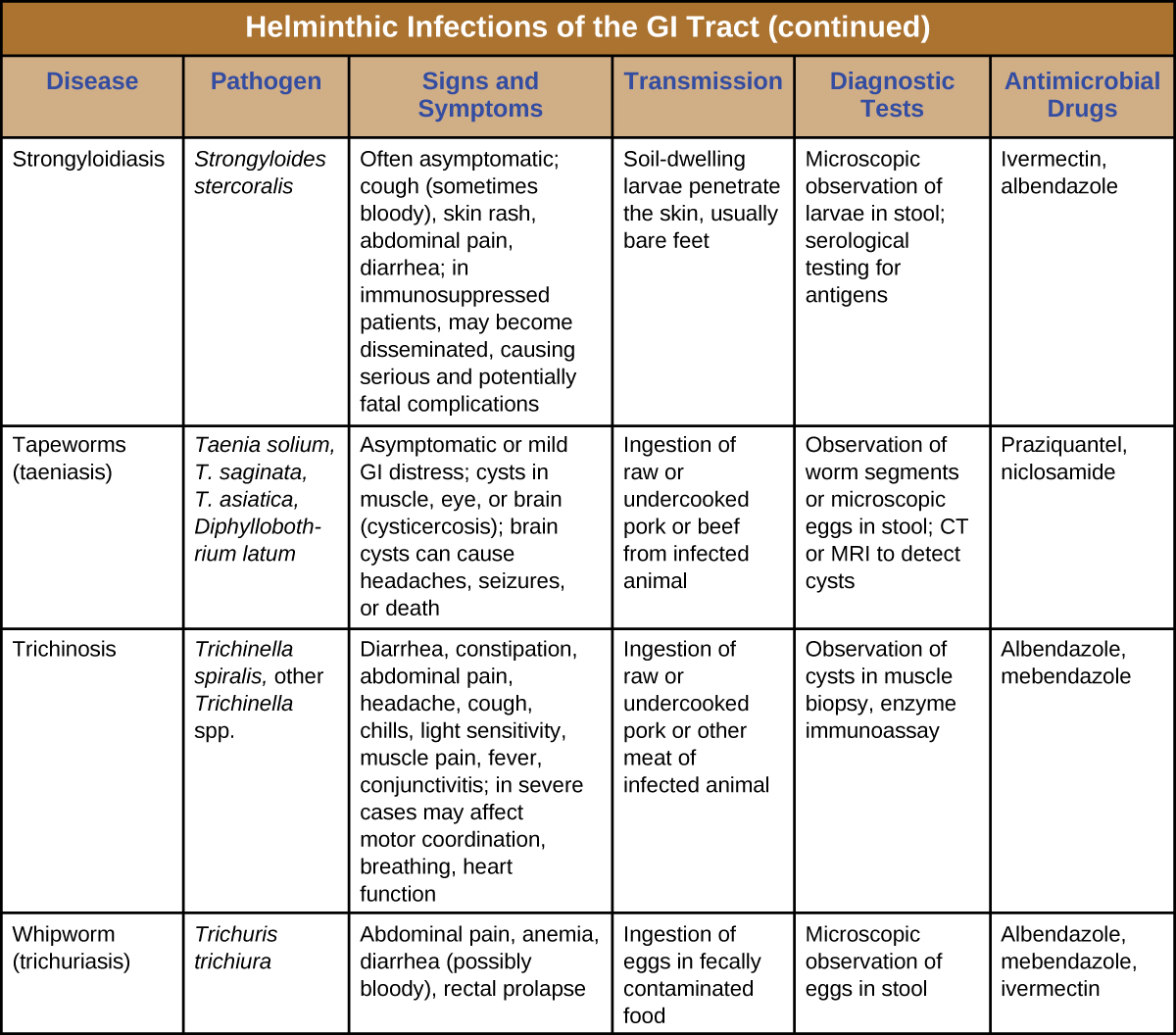| << Chapter < Page | Chapter >> Page > |
Diagnosis is the same as with liver flukes: examination of feces or other samples and immunoassay. Praziquantel is used to treat infections caused by intestinal flukes.
Numerous helminths are capable of colonizing the GI tract. Many such infections are asymptomatic, but others may cause signs and symptoms ranging from mild GI stress to severe systemic infection. Helminths have complex and unique life cycles that dictate their specific modes of transmission. Most helminthic infections can be treated with medications.


Carli’s doctor explained that she had bacterial gastroenteritis caused by Salmonella bacteria. The source of these bacteria was likely the undercooked egg. Had the egg been fully cooked, the high temperature would have been sufficient to kill any Salmonella in or on the egg. In this case, enough bacteria survived to cause an infection once the egg was eaten.
Carli’s signs and symptoms continued to worsen. Her fever became higher, her vomiting and diarrhea continued, and she began to become dehydrated. She felt thirsty all the time and had continual abdominal cramps. Carli’s doctor treated her with intravenous fluids to help with her dehydration, but did not prescribe antibiotics. Carli’s parents were confused because they thought a bacterial infection should always be treated with antibiotics.
The doctor explained that the worst medical problem for Carli was dehydration. Except in the most vulnerable and sick patients, such as those with HIV/AIDS, antibiotics do not reduce recovery time or improve outcomes in Salmonella infections. In fact, antibiotics can actually delay the natural excretion of bacteria from the body. Rehydration therapy replenishes lost fluids, diminishing the effects of dehydration and improving the patient’s condition while the infection resolves.
After two days of rehydration therapy, Carli’s signs and symptoms began to fade. She was still somewhat thirsty, but the amount of urine she passed became larger and the color lighter. She stopped vomiting. Her fever was gone, and so was the diarrhea. At that point, stool analysis found very few Salmonella bacteria. In one week, Carli was discharged as fully recovered.
Go back to the previous Clinical Focus box.
Why does the coughing up of worms play an important part in the life cycle of some helminths, such as the roundworm Ascaris lumbricoides ?

Notification Switch
Would you like to follow the 'Microbiology' conversation and receive update notifications?